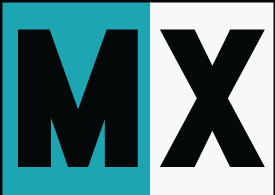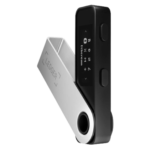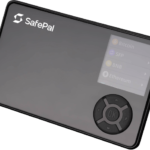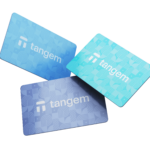
Choosing the right crypto wallet feels like a big deal—because it is. With so much at risk, you need a wallet that’s secure, reliable, and user-friendly. That’s where the Trezor Model One comes in, a trusted name in the crypto world for over 10 years. Is it still the best in 2025? I’ve tested it, and in this Trezor Model One review, I’ll show you exactly what it offers—and if it’s worth your money.
Trezor Model One Review: Overview
Before I begin this review, here is a quick snapshot of what the Trezor Model One offers.
Trezor Model One |
|
|---|---|
Price |
$49 |
Security |
PIN & passphrase protection, open-source code |
Connectivity |
Micro USB |
Supported Crypto |
1,000+ coins/tokens |
Weight |
12 g |
Box Contents |
Wallet, USB cable, backup cards, stickers, guide |
What is Trezor Model One?
The Trezor Model One is a hardware wallet designed to securely store and manage cryptocurrencies offline, protecting them from online threats like hacking or phishing. Launched in 2014 by SatoshiLabs, a Czech-based company known for pioneering cryptocurrency security solutions, the Trezor Model One was the world’s first hardware wallet. It comes in two colors—white and black—and remains a popular choice for both beginners and experienced users due to its affordability and robust security features.
In addition to the Model One, SatoshiLabs offers other advanced hardware wallets, including the Trezor Model T, which features a touchscreen, and the newer Trezor Safe 3 and Trezor Safe 5 models, which cater to users seeking enhanced functionality and security options.
What is Trezor Model One?
Let’s break it down. Trezor Model One is a hardware wallet, which means it’s a physical device specially designed to safeguard your digital coins. It’s like your personal vault, but it fits right in your pocket. So, whether you’re a seasoned crypto pro or just starting out, this little gadget can help keep your precious assets safe from digital threats.
Now, you might be wondering, “Why do I need a hardware wallet in the first place?”
Well, it all comes down to security. You see, while online exchanges and software wallets are convenient, they’re also vulnerable to hacks, malware, and phishing attacks. Hardware wallets like Trezor Model One, Trezor Model T, and the latest Trezor Safe 3, on the other hand, store your crypto offline, away from prying eyes and sneaky hackers.
Think of it as your secret treasure chest hidden deep in a digital ocean. It’s the difference between leaving your gold coins out in the open versus locking them in a steel vault. Trezor Model One adds an extra layer of defense to your digital assets, making it an invaluable tool in the world of cryptocurrency.
Design and Build Quality
When you finally get your hands on this wallet, the first thing you’ll notice is how compact this device is – at just 60x30x6mm and weighing a mere 12g, it’s smaller than a car key fob. I particularly appreciate this because it fits perfectly in my pocket or can be tucked away discreetly in my desk drawer.
The white plastic casing (also available in black) might feel basic compared to premium metal wallets, but I’ve found it’s surprisingly durable. The PC/ABS thermoplastic blend has survived several accidental drops on my hardwood floor without a scratch. The two-button control system initially seemed overly simple, but I’ve grown to appreciate its reliability – these buttons are rated for over 200,000 clicks, and after thousands of transactions, they still feel as responsive as day one.
Display and User Interface
The 0.96″ monochromatic OLED display is another highlight of this Trezor Model One review. While it’s not exactly cutting-edge technology, I’ve found it perfectly readable even in different lighting conditions, and the deep blacks make transaction details crystal clear. The screen size might feel small at first, but it displays just enough information to verify your transactions without feeling cramped.
With the two-button navigation, the interface is straightforward and user-friendly. Every action, from confirming transactions to adjusting settings, requires physical interaction on the device, which adds a reassuring layer of security. It’s not flashy, but it’s reliable and gets the job done efficiently.
Is Trezor Model One Safe?: Security Features
I suppose one of the reasons you are reading this Trezor Model One review is to know if this wallet is safe. When it comes to security, the Trezor Model One sets a gold standard for hardware wallets. From the moment I set it up, I felt that I am in control of my crypto. The wallet requires a PIN for access, which can be up to 50 digits long—a level of customization and security that’s hard to beat. For added protection, you can enable a passphrase, which acts like a secret layer of security on top of your PIN. This means even if someone manages to get physical access to the device, your assets remain locked behind another safeguard.
One of the standout features is the device’s open-source design. Knowing that the wallet’s code is publicly available and constantly tested by the community gave me confidence in its transparency and trustworthiness. There’s no hidden functionality—everything operates exactly as advertised. I also appreciated the on-device transaction confirmation. Every action, whether sending Bitcoin or adjusting settings, requires physical approval through the wallet’s buttons, eliminating the risk of remote tampering.
With all of these, you can be rest assured that even if the wallet gets lost, stolen, or damaged, your funds are secure. The Trezor Model One uses a 12- or 24-word recovery phrase as a backup. I tested this by simulating a loss and was able to restore my wallet with zero hassle. Additionally, the packaging includes tamper-evident seals, so I knew the device hadn’t been interfered with during transit.
So from what I have experienced, the Trezor Model One provides an unbeatable combination of simplicity and advanced security features. It’s a wallet I trust completely to safeguard my crypto assets.
Connectivity and Compatibility
The Trezor Model One connects seamlessly to your devices via a micro USB cable. To be honest, it feels a bit outdated when compared to the Model T, Safe 3, and Safe 5 wallets that use the modern USB-C, but the connection is stable and gets the job done. I tested it on both Windows and macOS, and I can assure you it worked flawlessly.
It’s also compatible with Linux and Android, giving it broad accessibility across platforms. But one thing to note in this Trezor Model One review is that this wallet doesn’t support iOS directly, so keep that in mind if you’re an Apple-exclusive user. The wallet integrates well with multiple third-party wallets like MetaMask, which is great for users who manage diverse portfolios. Overall, it’s versatile enough to fit into most setups without any hassle.
My Experience With Trezor Suite Integration
The Trezor Suite app is where the Model One really shines. This software acts as your command center for managing crypto, and it’s intuitive and packed with features. I used it to send, receive, trade, and even stake coins, all within a secure and user-friendly interface. One feature I particularly liked was the ability to track my portfolio balance and view transaction history directly in the app. The layout is clean and easy to navigate, even for beginners.
Security is deeply integrated into the Suite. For every transaction, I had to physically confirm it on the wallet, which added an extra layer of peace of mind. The app also includes features like Tor integration for added privacy and coin control, which lets you manage specific inputs and outputs of your transactions. Whether you’re a casual user or an advanced trader, Trezor Suite enhances the functionality of the wallet significantly.
Cryptocurrency Support
The Trezor Model One supports an impressive range of cryptocurrencies; 8,000+ coins and tokens, including Bitcoin, Ethereum, and Litecoin. However, it’s important to note that the Trezor Model One doesn’t support XRP, SOL, ADA, XMR, and some newer or more niche tokens. You have to upgrade to Trezor Safe 3 for more token support.
Still, I found the support for ERC-20 tokens particularly useful since it allows for managing a wide variety of Ethereum-based assets.
For most mainstream coins, the wallet works directly with the Trezor Suite app, making it easy to send, receive, and track your holdings. The breadth of supported assets ensures that the Model One can meet the needs of both seasoned investors with diverse portfolios and newcomers focusing on the basics. While it doesn’t support every token out there, it covers enough ground to remain a top choice for managing your crypto securely.
What’s in the Box?
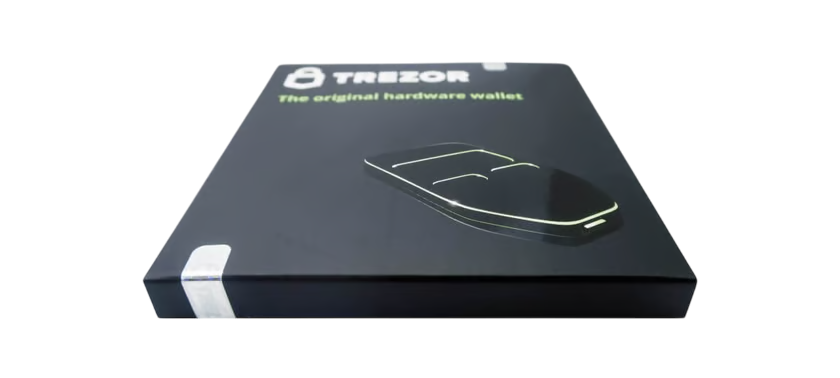
Unboxing the Trezor Model One was straightforward and reassuring. Inside the box, you’ll find the Trezor Model One hardware wallet itself, a micro USB to USB-A cable, two wallet backup cards for writing down my recovery phrase, a startup guide, and a couple of Trezor stickers.
The inclusion of the backup cards was particularly thoughtful—they’re durable and well-designed for safekeeping your recovery phrase. The packaging also has tamper-evident seals, so I immediately knew the device hadn’t been tampered with during shipping. It’s a small but crucial detail that added to my trust in the product right from the start.
Trezor Model One Review: Pricing
At just $49, the Trezor Model One is the most affordable hardware wallet in Trezor’s lineup—and one of the best-priced options on the market overall. To put this into perspective, the Trezor Safe 3 costs $79, the Trezor Model T comes in at $129, and the Trezor Safe 5 is priced at $169. Despite its budget-friendly price, the Model One doesn’t skimp on essential features, offering the same high level of security and reliability that Trezor is known for.
While it lacks some unique features found in more expensive models, such as the Safe 5’s vibrant color touchscreen & haptic feedback, the Model One delivers incredible value for the features it offers. So if you want an entry-level hardware wallet or a budget-friendly way to secure their crypto, you should buy the Trezor Model One.
Trezor Model One Review: Pros and Cons
Pros:
- Affordable price without compromising on security
- Compact and lightweight design, ideal for portability
- Supports thousands of coins and tokens
- Transparent and open-source software and hardware design
- Seamless integration with the Trezor Suite app for easy management
- PIN and passphrase protection for added security
- Tamper-evident packaging and robust recovery options
Cons:
- Uses micro USB instead of modern USB-C
- No direct support for iOS devices
Overall, the pros far outweigh the cons, especially for users prioritizing security and simplicity over flashy features.
Should You Buy the Trezor Model One?
Yes! If you’re serious about securing your cryptocurrency but don’t want to spend a fortune, then buy the Trezor Model One. It is an excellent choice for beginners stepping into the world of crypto or seasoned users who want a reliable and proven hardware wallet.
While it doesn’t have the advanced features of pricier models like the latest Trezor Safe 5, it more than holds its own with robust security, ease of use, and compatibility with over 8,000 cryptocurrencies.
If you’re also okay with a small monochromatic screen and can work around the lack of USB-C or iOS support, the Model One delivers incredible value for its price. From what I have experienced from using it, it’s a wallet that inspires confidence, ensuring your crypto is always safe and under your control.
Where to Buy Trezor Model One
To ensure the integrity and security of your Trezor Model One, it’s advisable to get it directly from the official Trezor website or authorized resellers. Buying from unofficial sources risks receiving a compromised device that could jeopardize your assets.
When I ordered my Trezor Model One, I found the process straightforward, with various shipping options to suit my needs. Shipping within the United States is free, which is a fantastic perk. For international buyers, shipping costs vary: $7.25 to the United Kingdom, $19 to Australia, and $30 to Nigeria. Both DHL and UPS are available as shipping options. DHL delivers in 5-7 business days via air, while UPS takes a bit longer, around 8-13 business days, also by air.
Payment is flexible and secure, with options like PayPal, Google Pay, and Apple Pay for express checkout. For crypto enthusiasts, Trezor even accepts payment in Bitcoin and other cryptocurrencies, which I found to be a nice touch.
Overall, ordering directly from Trezor’s website not only guarantees a safe and genuine product but also offers a smooth purchasing and shipping experience.
Trezor Model One vs Ledger Nano S Plus vs SafePal S1 vs Tangem Wallet
If you’re considering the Trezor Model One but wondering how it stacks up against similar wallets in the same price range—or even exploring alternatives—this comparison will help you decide. Each of these wallets has its own strengths and weaknesses, and understanding their differences is key to making the right choice for your needs. Here’s a breakdown of how the Trezor Model One compares to the Ledger Nano S Plus, SafePal S1, and Tangem Wallet. For a more detailed look at any of these wallets, don’t forget to check out our in-depth reviews!
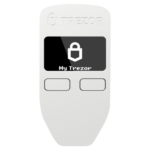
Trezor Model One |
||||
|---|---|---|---|---|
Price |
$49 |
$79 |
$49.99 |
$54.00 |
Security |
PIN & passphrase protection, open-source code |
PIN & passphrase protection, closed-source |
PIN & passphrase protection, air-gapped |
No PIN/passphrase, NFC-based secure chip |
Connectivity |
Micro USB |
USB-C |
QR Code (Air-gapped) |
NFC |
Supported Crypto |
1,000+ coins/tokens |
5,500+ coins/tokens |
30+ blockchains, 10,000+ tokens |
6,000+ coins/tokens |
Weight |
12 g |
21 g |
39 g |
3 g |
Box Contents |
Wallet, USB cable, backup cards, stickers, guide |
Wallet, USB-C cable, keyring, guide |
Wallet, cleaning cloth, guide, stickers |
Wallet (3-pack), no cables or extra accessories |
Whether you prioritize affordability, security, or wide crypto support, there’s a wallet for everyone. Check out our full reviews for a closer look at each!
Read also! Trezor Safe 3 vs Trezor One
How to Use the Trezor Model One Wallet

Let me now show you how to use the Trezor Model One wallet if you finally decide to buy one. It’s very easy to set up even if you’re completely new to hardware wallets. Here’s how:
- Unbox and Connect:
Begin by unboxing your Trezor Model One. Connect the wallet to your computer using the included micro USB cable. - Visit Trezor Suite:
Open your browser and visit the official Trezor Suite. Download and install the app for your operating system. - Set Up Your Device:
Launch Trezor Suite and follow the on-screen instructions to initialize your wallet. You’ll be asked to update the device firmware if necessary. - Create a Wallet:
Choose to create a new wallet. Trezor will generate a recovery seed—a 12-word phrase that acts as a backup for your wallet. Write these words down on the provided backup cards and store them safely. Never share this recovery seed with anyone or store it digitally. - Set PIN and Passphrase (Optional):
Secure your wallet by setting a PIN. You can also add a passphrase for additional protection. The passphrase acts as an extra layer of security and is like a second password. - Add Accounts and Receive Crypto:
In Trezor Suite, you can add accounts for different cryptocurrencies. To receive crypto, select the account, click “Receive,” and share the generated wallet address with the sender. - Send Crypto:
To send crypto, select the account, click “Send,” enter the recipient’s wallet address, and specify the amount. Confirm the transaction details on your Trezor device by physically pressing the buttons. - Manage Your Portfolio:
Use Trezor Suite to track your balances, view your transaction history, and even buy, sell, or trade cryptocurrencies with integrated exchange partners.
As you can see, the process is intuitive, and Trezor’s on-screen prompts make it easy to navigate.
Trezor Model One Review: Final Verdict
The Trezor Model One is a hardware wallet that perfectly balances affordability, functionality, and security. As the first hardware wallet ever created, it has stood the test of time and continues to deliver robust protection for cryptocurrency enthusiasts. So if you’re looking for a wallet that offers peace of mind without breaking the bank, the Trezor Model One is an excellent option.
FAQs
1. Is the Trezor Model One a good wallet for beginners?
Absolutely. The Trezor Model One is beginner-friendly, with a straightforward setup process and an intuitive interface. It’s perfect for anyone looking to secure their crypto assets without dealing with overly complex features.
2. Which cryptocurrencies does the Trezor Model One support?
The Trezor Model One supports over 1,000 cryptocurrencies and tokens, including Bitcoin, Ethereum, Litecoin, and ERC-20 tokens. However, it does not support some newer coins like Cardano (ADA) or Solana (SOL).
3. How safe is the Trezor Model One?
The Trezor Model One is highly secure, featuring PIN and optional passphrase protection. Its open-source design allows for community auditing, and transactions require on-device confirmation, ensuring full control and safety.
4. Can I use the Trezor Model One with mobile devices?
The Trezor Model One is not compatible with iOS but can be used with Android devices via third-party apps. It primarily connects to computers via a micro USB cable.
5. What happens if I lose my Trezor Model One?
If your wallet is lost, stolen, or damaged, you can recover your funds using the 12-word recovery seed you generated during setup. Keep this seed stored safely, as it’s essential for recovery.
6. Does the Trezor Model One come with a warranty?
Yes, Trezor devices come with a 2-year warranty against manufacturing defects when purchased from the official website or authorized resellers.
7. Can I stake cryptocurrencies with the Trezor Model One?
Yes, staking is possible for some coins through integrations in the Trezor Suite app or third-party services like Exodus or MetaMask, depending on the cryptocurrency.
8. Where should I buy the Trezor Model One to ensure it’s genuine?
Always buy directly from the official Trezor website or authorized resellers to avoid counterfeit or tampered devices.
